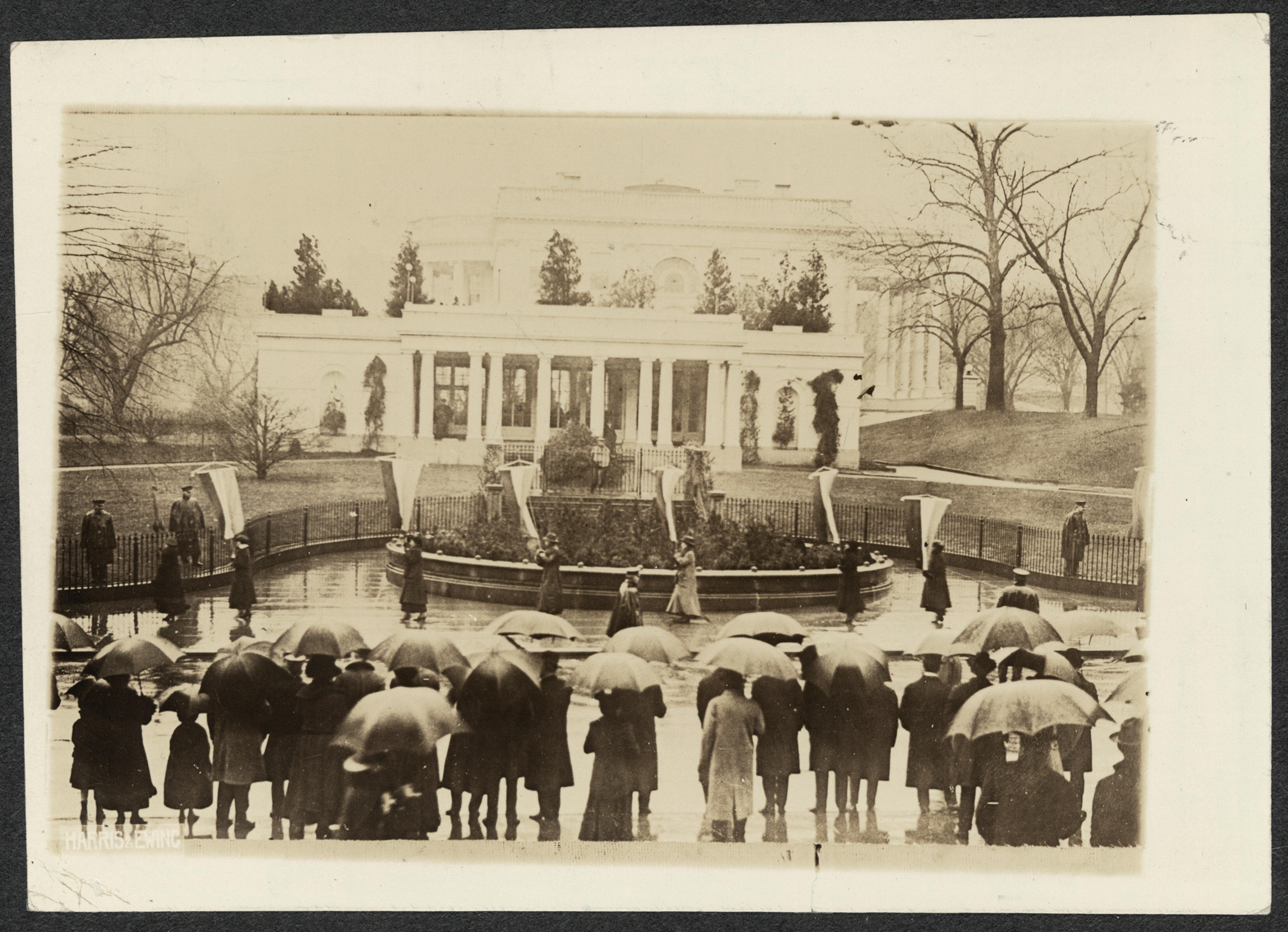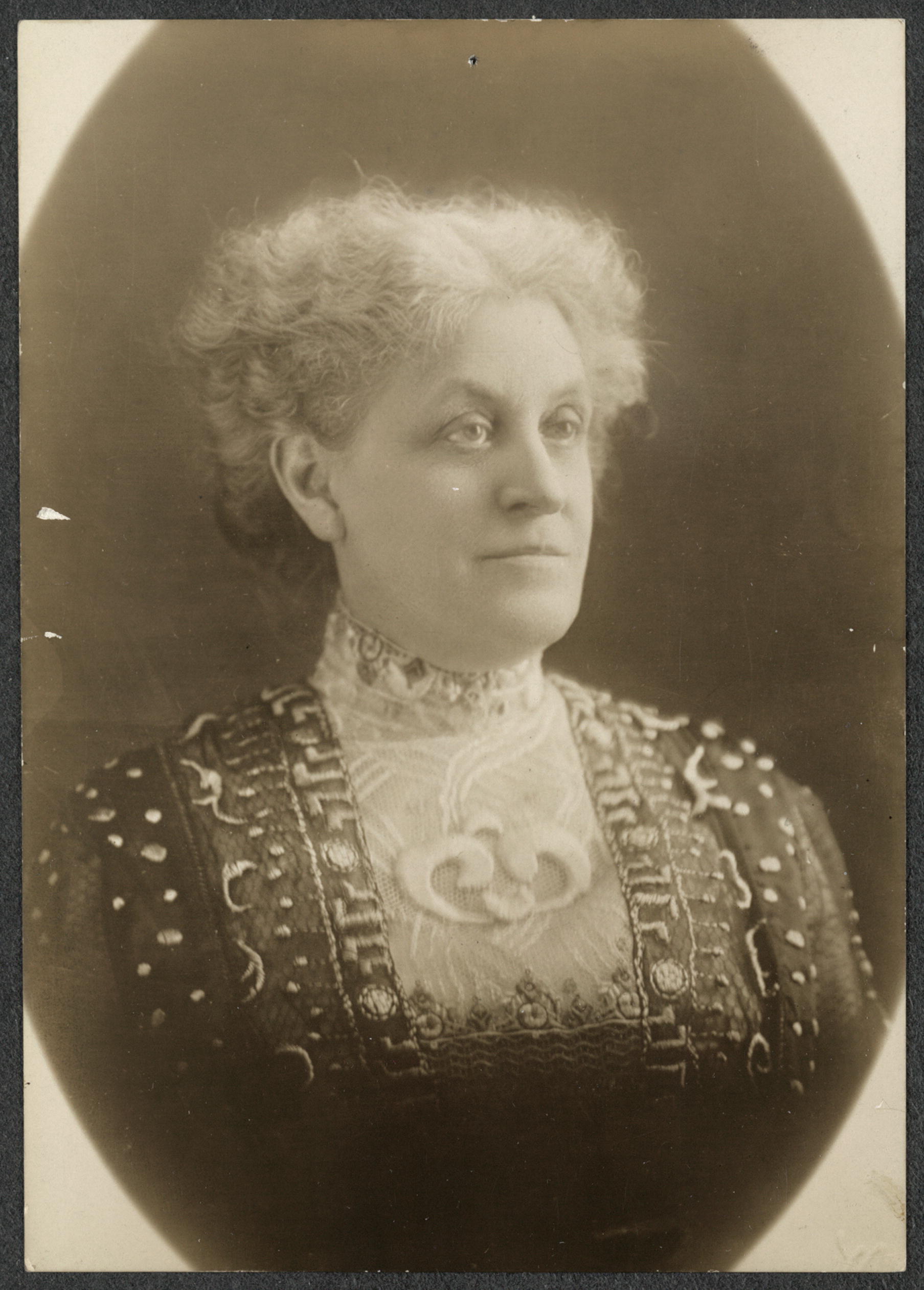March 4 - Today's post provided by Ann Bausum
On March 4, Remember the Grand Picket for Voting Rights
 |
| Suffrage pickets marching around the White House-- March 4, 1917 |
The finale to the 72-year-long fight for women’s voting rights occurred during the two-term Presidency of Woodrow Wilson. Women mounted a fierce campaign against his reelection in 1916 after he had neglected their calls for support of woman suffrage during his first administration. Wilson’s victory pushed the most radical of the suffragists—a group that became known as the National Woman’s Party—to mount a campaign of civil disobedience in protest.
The woman began their efforts on January 10, 1917, by mounting daily pickets in front of the White House. Volunteers stood for hours in all weather holding protest signs with messages such as “Mr. President, what will you do for woman suffrage?” and “How long must women wait for liberty?”
To mark the occasion of the President’s second inauguration (which in those days took place in early March), the National Woman’s Party organized what it called the “grand picket.” A thousand women gathered from all over the country to march on the White House carrying a resolution that urged President Wilson to act on the cause of woman suffrage during his second term of office.
 |
| Picketing the White House at Wilson's second inauguration, March 4, 1917 |
In spite of horrible weather, the event proceeded as planned on inauguration day, March 4, 1917. Women lined up in single file, fighting a stiff wind to hold aloft their protest banners as an icy rain drenched their clothes. Two bands accompanied the procession and played hymns, marches, and protest songs. Thousands of spectators lined their route around the perimeter of the presidential mansion, as did a double row of police officers. Federal workers unsympathetic to the cause watched in amusement as the women passed their office windows.
The procession stopped at all of the residency’s three main entry gates only to find each in turn had been locked with orders to deny all access by the protesters. Guards, obeying instructions, refused to accept the petition and carry it inside. One more sympathetic guard offered to receive the document at a service entrance, but the women elected not to leave their official plea at “the gate where Mrs. Wilson’s clothes and other packages are left.”
The marchers, who ranged in age from 20 to 84, persisted in their parade around the White House, hoping to attract the President’s attention. They lapped the fenced grounds four times over the course of two hours in spite of battering rain and wind. Late in the afternoon participants watched in dismay as President and Mrs. Wilson departed the White House in a chauffeured car, proving that Wilson had deliberately ignored their attempts to contact him.
“This one single incident probably did more than any other to make women sacrifice themselves” later on, wrote suffragist Doris Stevens in her memoir of the voting rights fight, Jailed for Freedom. “Even something as thin as diplomacy on the part of President Wilson might have saved him many restless hours to follow, but he did not take the trouble to exercise even that,” Stevens observed.
 |
| Miss Alice Paul, New Jersey, National Chairman, Congressional Union for Woman Suffrage; Member, Ex-Officio, National Executive Committee, Woman's Party |
 |
| Helena Hill Weed, Norwalk, Conn. Serving 3 day sentence in D.C. prison for carrying banner, "Governments derive their just powers from the consent of the governed." |
Members of the National Woman’s Party, under the leadership of Alice Paul, would go on to picket in front of the White House throughout much of President Wilson’s second term. Such efforts became controversial after the United States joined the First World War in April, 1917. Wartime pickets attracted hecklers who physically attacked them as unpatriotic. Capitol police arrested the women, and hundreds went to jail instead of paying fines they viewed as unjust. Many began hunger strikes to protest their confinement. Prison officials retaliated with forced feedings during an escalating battle of wills.
 |
| Mrs. Carrie Chapman Catt, Speaker at Continental Hall |
Wilson eventually caved under pressure from these activists and members of the more moderate National American Woman Suffrage Association, led by Carrie Chapman Catt. In early 1919 he began to urge Congress to pass an amendment to the U.S. Constitution granting women the right to vote. Following years of failed attempts, the 19th Amendment finally passed the House of Representatives and the Senate that spring.
A fierce ratification fight followed in state legislatures, leading to the amendment’s enactment into law on August 26, 1920—just in time for women to vote nationwide in that fall’s presidential election.
BIBLIOGRAPHY:
Bausum, Ann. With Courage and Cloth: Winning the Fight for a Woman’s Right to Vote. Washington, D.C.: National Geographic Society, 2004.
Flexner, Eleanor. Century of Struggle: The Woman’s Rights Movement in the United States. Cambridge, Massachusetts: Harvard University Press, 1996 edition, 2000 printing.
Ford, Linda G. Iron-Jawed Angels: The Suffrage Militancy of the National Woman’s Party, 1912-1920. Lanham, Maryland: University of America Press, 1991. See pages 133-34 for specific details regarding the “grand picket.”
Stevens, Doris. Jailed for Freedom. New York, New York: Liveright Publishing Corporation, 1920. See pages 75-79 for specific details regarding the “grand picket.”
ON-LINE RESOURCES:
For more information about blog post author Ann Bausum’s book for young readers: With Courage and Cloth, visit http://www.annbausum.com/courage.html
To learn about her other books of social justice history for young people, visit: http://www.annbausum.com/index.html
For more information about the National Woman’s Party, visit: http://www.sewallbelmont.org/
Watch “Iron Jawed Angels” ( 2004) the HBO dramatization of the closing fight for woman’s suffrage, starring Hilary Swank as National Woman’s Party leader Alice Paul. See this link for details: http://iron-jawed-angels.com/
For the transcript of an extensive interview recorded with Alice Paul during 1972-73 click this link: http://content.cdlib.org/ark:/13030/kt6f59n89c/
See additional images about the 20th-century woman suffrage fight at the on-line American Memory exhibit at the Library of Congress of photos from its National Woman’s Party collection. Use this link: http://memory.loc.gov/ammem/collections/suffrage/nwp/
Photo credits for all images:
Women of Protest: Photographs from the Records of the National Woman's Party, Manuscript Division, Library of Congress, Washington, D.C.
See this link for more information on rights:
http://memory.loc.gov/ammem/collections/suffrage/nwp/rights.html
Editor's Note:
Ann Bausum writes books about U.S. history for readers young and old, ages 10 and up. Her books help upper elementary, middle school, and high school students discover the drama and significance behind stories from history that may barely be presented in their textbooks. Her goal as an author is to make history relevant, engaging, and alive. Visit her website to find out more about her, her award-winning books, and the process of writing nonfiction.
Editor's Note:
Ann Bausum writes books about U.S. history for readers young and old, ages 10 and up. Her books help upper elementary, middle school, and high school students discover the drama and significance behind stories from history that may barely be presented in their textbooks. Her goal as an author is to make history relevant, engaging, and alive. Visit her website to find out more about her, her award-winning books, and the process of writing nonfiction.












Ann, thanks so much for your fascinating post! I don't remember learning about these protests at all back in the olden days when I was in school, but I was delighted when my 10th grader told me they had learned "all about it" in her world history class.
ReplyDeleteIsn't it something to imagine what this event would have played like in today's TV 24/7 news media? Wilson could never have gotten away with ignoring the issue for so long, I think. What do you think?
The courage of these women is akin to the courage being shown now around the world as people peacefully protest for their rights, putting their own safety in danger for the benefit of all. We owe these women.
ReplyDeleteLove the history lesson, and those images added so much. We tend to forget that the suffrage movement was such a prolonged battle, and that its proponents were as strategical and determined as any modern day army. Thanks for providing all the resources.
ReplyDeleteYou want a grand party at your wedding ceremony to enjoy your self I would like to draw your attention at the grand of wedding venue vaughan and banquet halls.
ReplyDelete